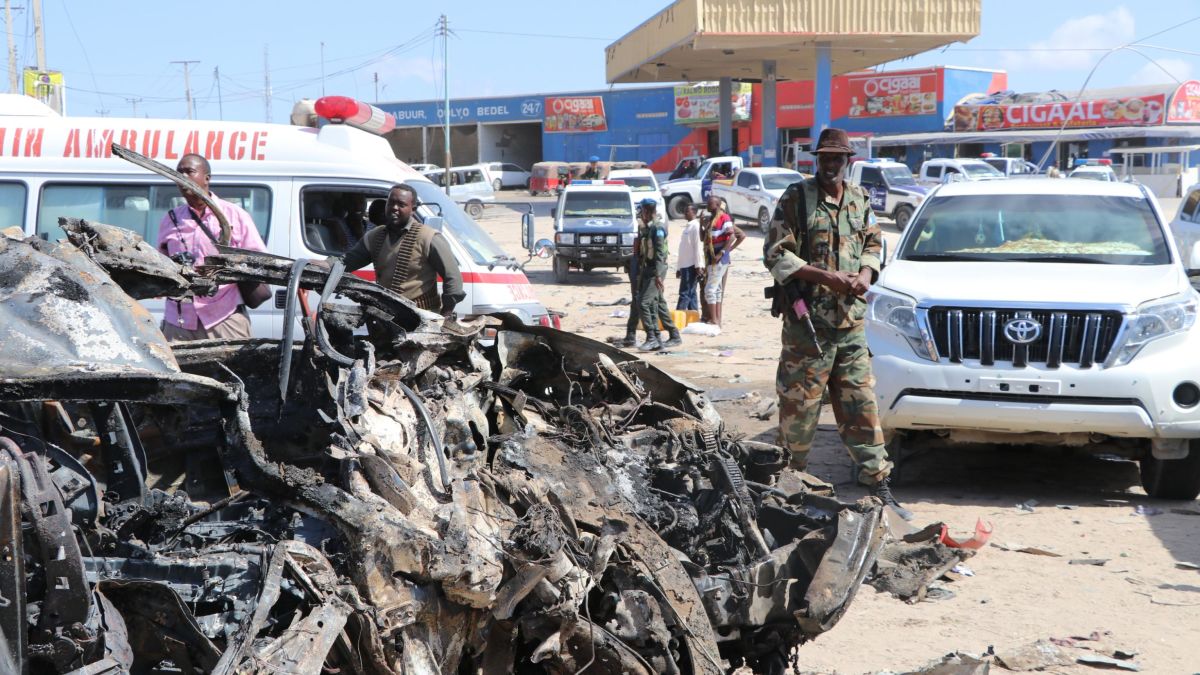Now the Trump administration is thinking of withdrawing the U.S. military troops from Somali, some experts say the decision was approached in bad timing.
Three decades of chaos have ripped apart the country that only in the past few years has begun to find its footing. The U.S. Embassy returned to Somalia just last year, 28 years after diplomats and staffers fled.
Somalia faces a tense election season that begins in the next few weeks to decide the presidency and parliament.
The African Union’s 19,000-strong AMISOM, has begun its own withdrawal from a country whose forces are widely considered unready to assume full responsibility for security.
But the idea is taken seriously, even as U.S. drone strikes are expected to continue in Somalia against al-Shabab and IS fighters from neighboring Djibouti and Kenya — where al-Shabab carried out a deadly attack against U.S. forces early this year.
The U.S. Africa Command has seen a “definitive shift” this year in al-Shabab’s focus to attack U.S. interests in the region, a new report by the Department of Defense inspector general said Wednesday.
“Al-Shabab is Africa’s most dangerous and imminent threat. it’s disastrous for Somalia’s security sector, it just causes that first panic reaction: You know, why now?” said Samira Gaid, a Somali national security specialist who served as senior security adviser to the prime minister and special adviser to the head of AMISOM.
Recent progress includes a “war council” between the U.S. and Somali governments, she said, where the U.S. helps to draw up military plans. “We call them Somali-led operations, but really the U.S. is hand-holding us through it.”
The U.S. military also trains Somalia’s elite Danab special forces that now number around 1,000, and is providing Danab with air cover and intelligence, Gaid said. “Is it possible to move forward with that plan now?”
Danab units are now operational in four of Somalia’s five member states, the U.S. military says, and they conducted about 80% of the Somali national army’s offensive forces in the quarter ending Sept. Somalia also has some 1,500 special forces that have been trained by Turkish troops, she said, but “they don’t benefit from Turkish advisers on the ground.”
Handling insecurity

Without U.S. forces, al-Shabab “will find it easier to overrun AMISOM, let alone the Somali national army,” Vanda Felbab-Brown, co-director of the African Security Initiative at the Brookings Institution, told an online event this week. And with neighboring Ethiopia’s conflict increasing pressure to withdraw more Ethiopian forces from Somalia, a U.S. troop withdrawal “is really just the worst time.”
The support that U.S. forces give AMISOM is “huge,” Gaid said, including as a key interlocutor with Somali forces. And with AMISOM also drawing down by the end of next year, “it’s a tricky time.”
The U.S. has said implementation of the plan for Somali forces to take over the country’s security next year is “badly off track,” said the new report by the Department of Defense inspector general. They still rely on the international community for financial support, and yet they “sometimes go unpaid for months.”
Maybe a U.S. withdrawal would lead the AMISOM force to adjust its own withdrawal timeline “more realistically,” Mahmood said. But no other country appears to have the willingness to replace what U.S. forces are doing on the ground
And a withdrawal of both the U.S. and AMISOM would risk leaving the impression that “Somalia increasingly can rely less and less on external security partners,” Mahmood said. What had meant to be the country’s first one-person-one-vote election in decades instead remains limited by disputes between the federal government and regional ones — which the U.S. has said also weakens command and control of Somali forces.
Even though U.S. forces don’t provide election security, “our problem is, with the U.S. focused on a drawdown of troops, it would not be focused on how the elections are going politically,” Gaid said.



















